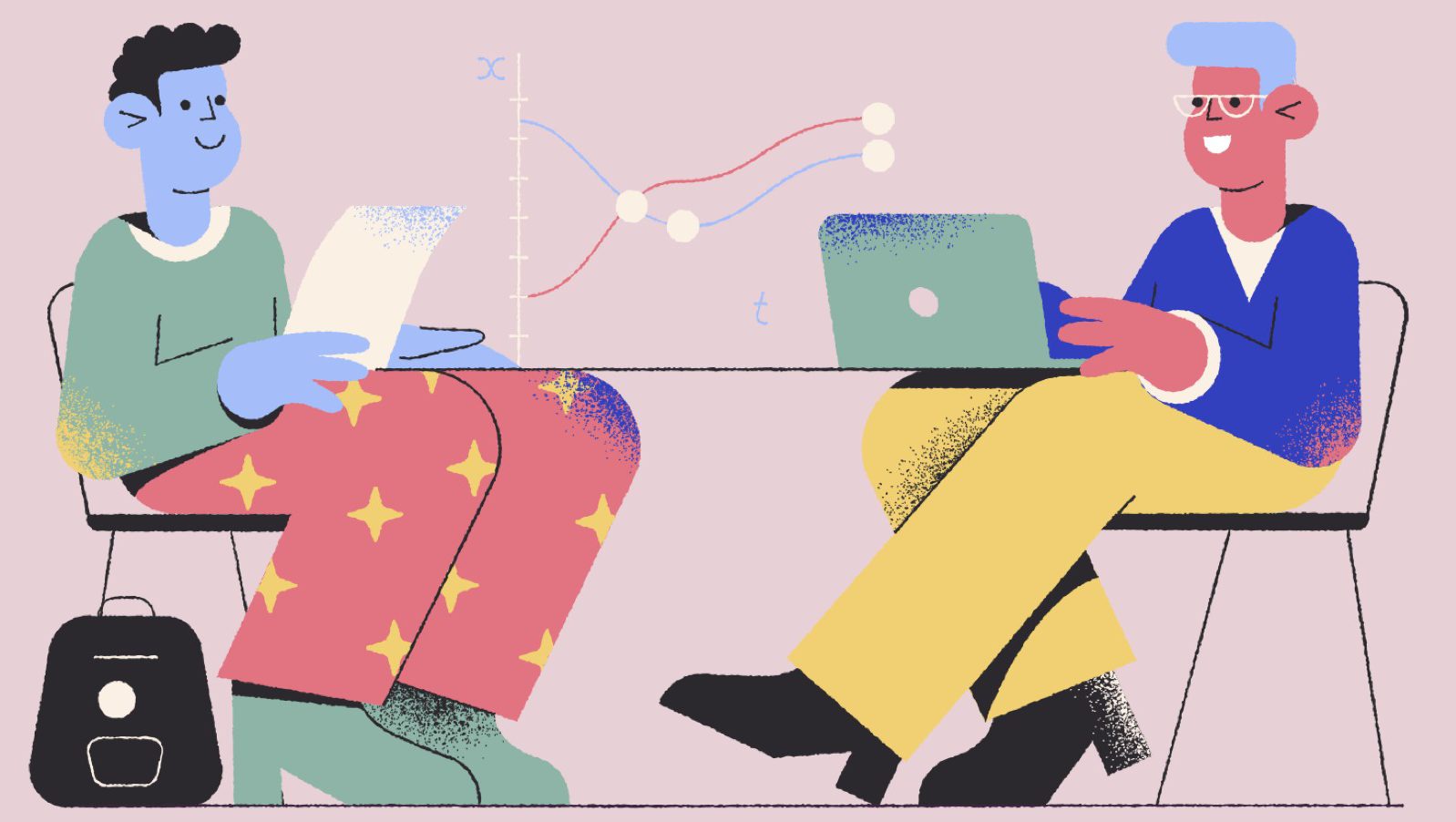Learning, beyond e-learning
A learning organization values human capabilities as drivers of mindful growth: but what should we train for, and how?
by Achille Zambon

As current global events have disrupted the economic landscape in ways we couldn’t have predicted a mere six months ago, that “capital T” Transformation that we’ve been anticipating, dissecting, and theorizing for the past 25 years or so, often from a comfortably relative distance, is now before our very eyes.
Many businesses, from retail to travel, are struggling to find new, creative, and sustainable ways of working, as millions of people have become remote workers overnight—making digital skills a sudden necessity of every job. In this scenario, building a learning organization that can be resilient and adapt to such landscape shifts has become even more of a priority for leaders worldwide. And, of course, this is only the latest acceleration of a very conspicuous—and growing—trend in the workforce skill gap issue.
Redefining WHAT we learn
The first line of response for HR teams in charge of learning and development processes has been, quite understandably, online training. Platforms such as Udemy and LinkedIn Learning report a 3x to 20x growth in e-learning adoption by both individuals and organizations: most in-demand courses include anything from Telecommuting to Photoshop and Illustrator, and from Stress Management to … Ukulele.
But in our quest for meaning we must first ask: what should we even train for? At H-FARM, we started our journey in corporate training with the mission of spreading the so-called “digital skills” of transformation, knowing since the very beginning that these skills go far beyond the realm of technology. The notion of “digital knowledge” itself should be expanded to include human phenomena which may be driven by technology, but are not entirely explained by it: social and cultural trends, new business models, and consumption patterns play as important a factor as technological forces in shaping the ‘map’ of today’s transformation.
But, of course, it’s not only about knowledge and awareness—reading a book on data science doesn’t make you a great data scientist, as we all know. And it’s not only about technical skills either: the set of specialized practices, tools, methodologies, and tasks that define a professional role are only a partial answer (and a very volatile one, in these days of constant ‘job mutation’). In other words, working 10 years in data science doesn’t necessarily make you a great data scientist—unless, that is, you learn to master the human capabilities that make you excel at that role: resilience to withstand the highly experimental nature of the job, intuition to envision new solutions amidst high ambiguity, or mentoring skills to turn your individual expertise into a widespread organizational capacity by empowering other people’s understanding of what you do—just to mention a few. And all of these crucial skills—these capabilities—seem worthy goals of a learning program today.
Redefining HOW we learn
A few forward-thinking organizations are now taking it a step further—redesigning the role and skill set of the corporate trainer, since so much of training is now carried out remotely, whether synchronously or asynchronously, with an entirely new toolset (Zoom, Miro, Teams, you name it).
And they’re onto something: shifting the focus from ‘what’ we learn to ‘how’ we learn is a good point. But the kind of change we want to make is not even a matter of designing a single “training product,” or even a program, however successful—its impact has much more to do with the “operating system” of an organization.
Internal job mobility, reskilling, and upskilling can actually be better understood as organizational design problems: how do we equip people with the right knowledge, skills, and tools to stay professionally relevant (and keep the company successful) at a systemic level? Not just through training, but through every aspect of the organization itself—processes, tools, and culture?
It comes down to the very notion of a learning organization. Since the ‘90s, a growing body of literature has explored the meaning of this term. But our history of startup acceleration at H-FARM has undoubtedly shaped the way we interpret the concept. For us, a learning organization, much like a startup, values those human capabilities as drivers of mindful growth and continuous experimentation: a culture of failure as opportunity, and a healthy dose of risk taking; a thirst for knowledge and innate curiosity towards the world; a shapeshifting ability that allows people to fluidly morph their professional identity along with changes in their external context.
But most importantly, since a “human-first” approach is rooted in our DNA, a learning organization can’t be about individual learning only. True organizational learning is a multiplier of each individual’s growth, and is fuelled by another set of capabilities: the ability to share with other people and coach them; to listen and understand others’ needs and perspectives; to communicate our points of view convincingly, leading with influence even when we lack formal authority; to trust others and step back when needed, in order to create new learning opportunities. All these individual and interpersonal capabilities in a learning organization, become core values and cultural traits; they are continuously signaled by people’s choice of words, manifested through desirable behaviors, and encouraged by internal processes. They are, for all intents, the “meta-competencies” of learning— the necessary qualities that ensure continuous adaptation to an ever-changing landscape.
At its core, a learning organization is aware that people’s growth is a process in which new information becomes awareness and then knowledge, while practice and experience solidify that very knowledge into practical expertise—all while continuously employing and developing a unique set of human capabilities. This is the journey of our personal and professional evolution within organizations: and learning happens during every stage of the process.
Once we’ve built this framework of understanding for corporate learning, we realize formal training programs are just the tip of the iceberg of organizational learning: we are then able to expand our notion of a learning experience, and design systems that thoroughly encourage this learning mindset.
Redesigning the learning experience
Corporate values and processes as a learning experience
One of our clients at H-FARM needed help introducing newly-hired talent to their internal system of values and principles. One way we did this—and which was widely appreciated by participants—was by designing a journal, inspired by the works of Giorgia Lupi and Keri Smith, that breathed new life into those values and asked people to reflect on them by giving them unconventional daily challenges that encapsulated those same values: from engaging in a people watching exercise, to writing a CV of their failures, or keeping a visual log of their reading habits.
This was a prime example of how formal corporate values (often perceived as remote, void, or outdated in large organizations) can provide an excellent learning opportunity, as long as we design new ways to engage with them that spark interest, meaning, and relevance into our everyday experience. For us, it was also a further chance to realize that offering a broad portfolio of learning experiences—one that works with a variety of media, timespans, styles, and interactions, helps cater to different learning styles and personalities.
‘Making things,’ as a learning experience
Rarely do we embark on projects that are “just consulting,” “just designing,” or “just training.” Being born with “big shoes and beautiful minds” means we are inherently biased towards making things—and making things together, while we’re at it.
In the past few years, we’ve devised formats that are equal parts co-design and training. With Leap we run 5-day sprints to ideate and rapidly test a new business idea—but we also train our clients in business design and startup thinking. With Tuneup, we engage in designing an identity, story, and unique voice for brands—but we also share with them our toolbox of brand identity methodologies and frameworks.
Games as a learning experience
If we really have to sit down and make a deliberate effort at learning something, how can we at least make it fun? So-called “serious games” are indeed a great way to let people experiment, observe, reflect, and improve their skills, behaviors, or decision-making patterns. Some—like the “Empathy Toy”, a game we use with our clients to teach collaboration, communication, and shared language—work as a physical experience, while some— like our own Paperleaves Lean Game, which teaches core Lean Startup principles by simulating a startup experience on a digital platform—are entirely digital products. All of them help us observe and develop critical capabilities for today’s workplace in a powerful, engaging, and frictionless way.
Formal training, of all things(!), as a powerful learning experience (if done properly)
“Proper” training products can now be better understood (and designed), in this complex system of formal and informal learning experiences, to solve a clearly articulated need for knowledge, technical skills, or new methodologies.
A two-day training bootcamp (whether delivered in-person, or online using platforms such as Zoom and Miro for virtual collaboration and facilitation) can be an effective way to get a group of people up to speed on how to deliver a convincing presentation, understand elements of coding, or learn the basics of Design Thinking—while providing a rewarding experience and a chance for team building.
To cover the full breadth and depth of what we have in the beginning called “digital knowledge,” there is maize.PLUS—our e-learning platform which helps people map the vast realm of innovation in all of its technological, business, cultural, and human components. Through a library of original and curated bite-sized content, more than 80,000 users in many global organizations are learning to expand their curiosity, open-mindedness, and ability to see change as an opportunity. They do so by increasing their awareness and understanding of digital transformation phenomena and navigating them autonomously, powered by their own interests and a passion for self-guided discovery.
Of course, even when it comes to digital training, technology is not the main focus. Being tech-agnostic allows us, for instance, to use VR training when it makes the most sense (such as by, recreating a technical training simulation in a safe environment when reality presents dangers for people), but to skip it when we think it doesn’t add real value.
A reminder of WHY we learn
By now, one thing should be clear: all of these formal and informal learning experiences put people in the front seat of their own development path.
If there is one secret to building a learning organization for these complex times, it is this: HR won’t know what the next thing you need to learn is. Organizational learning is first and foremost about providing people with context and awareness (a map, if you will); then building the right set of meta-competencies (and gearing them up for the trip); but ultimately trusting them to make the right choice when the time comes (letting them set the direction of their own trip).
That’s what we do when we approach the complex challenges of a learning organization by investing in open knowledge management systems, self-directed and bottom-up learning, and a strong connection between training and practice (as well as a good amount of fun and creativity).


